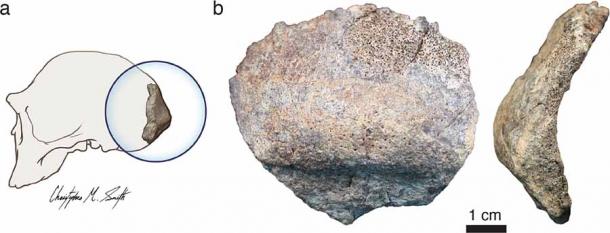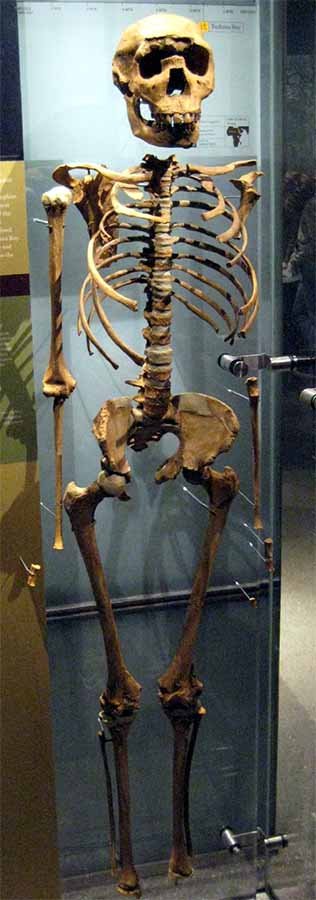The story of human evolution is a contested one. A basic narrative with certain elements of truth exists in the popular realm which is that the earliest human beings evolved from apes. That stage of evolution was not an overnight process, and took millions of years to reach its conclusion, including several evolutionary and biological mechanisms that we take for granted today. Now, scientists say our first ancestor walked around Lake Turkana, Kenya two million years ago! Early man and modern man are both part of the Hominidae family. Modern humans are homo sapiens .
To fill in the blanks on this massive timeline of the various genus evolutions, a new study by scientists from Arizona State University has revealed some exciting information, which was recently published in the journal %20
This skull bone is that of a homo erectus , which literally translates into “upright man,” the first hominid with a similar body structure and behavioral mechanism %20
According to %20

The latest study from Arizona State University suggests this is the skull fragment fossil of our first ancestor, which is 2 million years old! Source: Nature Communications
The Challenges of Dating Our First Ancestors at Lake Turkana
“Homo erectus was around for almost 2 million years and lived alongside several other hominid species at different periods of time,” Professor Hammond told %20
Homo erectus is our oldest ancestor with more human than ape-like characteristics, including significant brain development, %20
The discovery in question – KM-ER 2598 – was discovered at %20
<iframe width=”560″ height=”315″ src=”%20
To put it into context, the initial discovery of the Turkana skull and other remains was carried out without GPS or satellites or location tracking of any sort. All discovered fossils in the 1970s were merely identified with pinpricks and handwritten serial numbers. The standard practice of dating bone fossils was achieved by dating the rocks found immediately around the fossil.

The reassembled skeleton of Turkana Boy, which was discovered on Lake Turkana in 1984. It was dated to 1.5-1.6 million years ago. (Claire Houck from New York City, USA / CC BY-SA 2.0 )
Radiometric Dating and Understanding the New Discoveries
The team from Arizona State University carried out a process by %20
Even at that time in 1974, standard methods dated the fossil to 1.9 million years old, which was only surpassed by another homo erectus discovery in %20
At the site, thorough radiometric testing by Arizona State University researchers was carried out to determine that there were no younger rocks near KM-ER 2598 (the skull fragment fossil). Radiometric results showed that the skull, based on the stones found near it, was 1.88-1.9 million years old.
Subsequently, a group of nearby rocks, which were identical to the ones at the original site, were dated to 2 million years ago.
Foot and %20
“It is likely that they are the same individual since they were found so close together, but we cannot prove this,” Hammond told %20
DOI: https://doi.org/10.1038/s41467-021-22208-x
Top image: Modern human and Homo erectus man compared. Source: AlienCat / Adobe Stock
By Rudra Bhushan
References
Hammond, A.S., Mavuso, S.S., Biernat, M. et al . 2021. New hominin remains and revised context from the earliest Homo erectus locality in East Turkana, Kenya . Nature Communications 12 , 1939. Available at: %20
Heritage Daily. 2021. Study cements age and location of hotly debated skull from early human Homo erectus . Available at: %20
Liberatore, S. 2021. Skull bone reveals human ancestor homo erectus lived 2 million years ago , making it the oldest specimen on record . Available at: %20
Rayne, E. 2021. Who started to look human go way back… like 2 million years back . Available at: %20
 RSS Feed
RSS Feed















 April 19th, 2021
April 19th, 2021  Awake Goy
Awake Goy  Posted in
Posted in  Tags:
Tags: 













